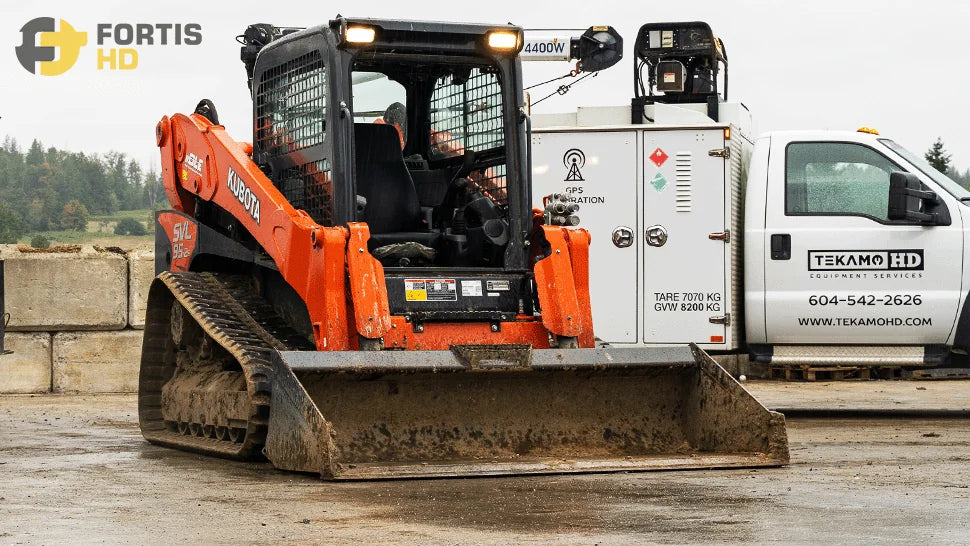
What are the Best Tracks for Skid Steers to Enhance Performance?
Written by Luis Montes
Updated On June 03, 2024
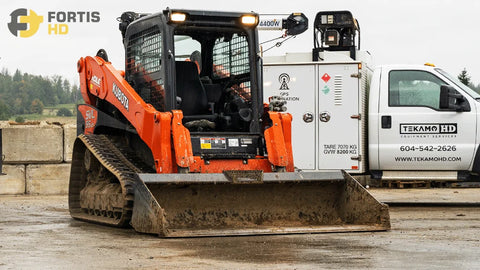
Featured Tools
+

Written by Luis Montes
Updated On June 03, 2024

+
Most skid steer rubber tracks can make skid steers effective, but if you don’t choose correctly, they won’t provide efficiency.
You must consider the terrain, task, and project length to choose the right pattern, width, and quality (rugged economy or premium). Buying from a reliable supplier will guarantee 100% fitment and a long life.
At Fortis, we have the best aftermarket replacement tracks matching OEM specifications, so you can focus on choosing the pattern, width, and quality to enhance performance.
Keep reading to learn how to choose the best tracks for skid steers to boost performance.
Terrain should be the main factor when selecting skid steer rubber tracks.
You should also ponder the type of task you’ll be doing, which will define the framework size of the skid steer and, thus, the track size.
Finally, depending on the length of the project or what you plan to do with your skid steer, you can choose between rugged economy and premium tracks.
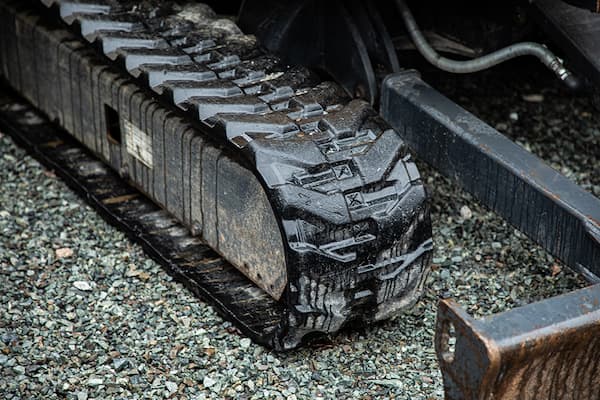
Terrain will mainly define the pattern you’ll need and is also one of the factors when choosing the track width.
Tracks with a high lug-to-void ratio will increase the contact patch for optimal traction when working on a road surface.
You’ll need tracks with wide grooves between lugs when working on loose terrain. The lugs pack sand, gravel, or snow into those channels, making a contact patch for the treads and grooves.
Track width also matters depending on the terrain.
On loose terrain, wide tracks offer more flotation and low ground pressure since they spread out the machine’s weight, so you don’t spend most of your time sinking.
Narrow tracks develop more pressure, thus more grip. Narrow tracks are suitable for hard and rocky ground where flotation isn’t a primary concern.
There are also standard tracks for general-purpose applications like material handling, demolition, and landscaping. Standard tracks offer balance flotation, pressure, and maneuverability.
The width of narrow tracks is less than 12 in (305 mm), standard tracks range between 12 to 18 in (305 to 457 mm), and wide tracks range between 18 to 24 in (457 to 610 mm).
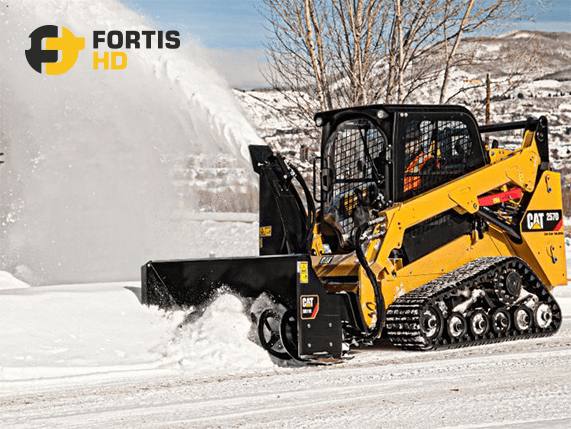
The size of skid steers varies depending on the tasks and, with it, the track size.
While track length links directly to the machine’s frame size, you can still play with the width to gain stability, traction, or maneuverability.
For example, when doing indoor demolitions, especially in tight spaces, we recommend a set of 320x86x50 tracks instead of 400x86x50 so you’ll leverage the 80 mm difference for a tighter turning radius to avoid obstacles more easily.
When lifting and transporting heavy loads, opt for wide tracks for stability.
If you need more traction, look for narrow tracks.
Let’s calculate the significant pressure difference due to track width.
Consider a John Deere 317G Skid Steer with an operational weight of 8,423 lb and two rubber track sizes: 320x86x50 and 400x86x50.
Contact area of narrow track = 50.79” x 12.60” = 639.95 in2
Contact area of wide track = 50.79” x 15.75” = 800 in2
Pressure from narrow tracks = 8,423 lb / 2 tracks x 639.95 in2 = 6.58 psi
Pressure from wide tracks = 8,423 lb / 2 tracks x 800 in2 = 5.26 psi
Pressure difference = 6.58 psi – 5.26 psi = 1.32 psi (190 lb/ft2).
As you can see, a set of tracks with a width 80 mm smaller increases the pressure by 25%.
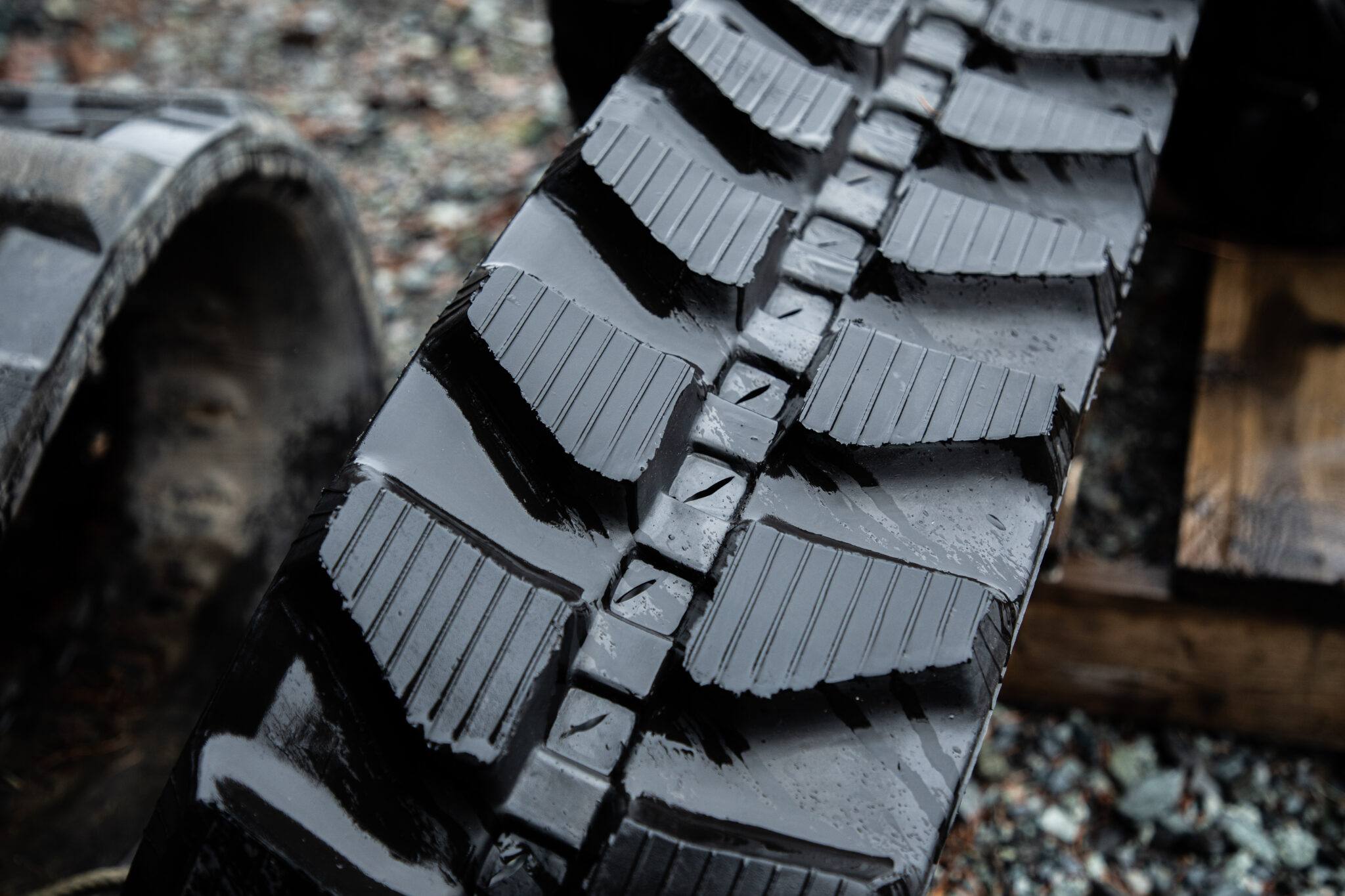
At Fortis, we offer a line of reliable rugged economy rubber tracks for short-term projects or light-duty applications or if you plan on selling your skid steer soon.
We also have a line of premium rubber tracks, ideal for heavy-duty applications, challenging terrains, and operators who use their machines regularly and in diverse conditions.
Our premium tracks feature a controlled vulcanization technology with advanced raw materials for superior duration and traction, high-quality drop forged steel inserts, and dual continuous steel belts with wound multi-strand cables.
Regardless of your decision, you’ll get high-quality rubber tracks, as seen from our 5/5 customer reviews.

When you purchase skid steer tracks through Fortis, you can be sure that once installed, they’ll stay put until you finish the job so you can minimize waste and reduce costs to stay competitive.
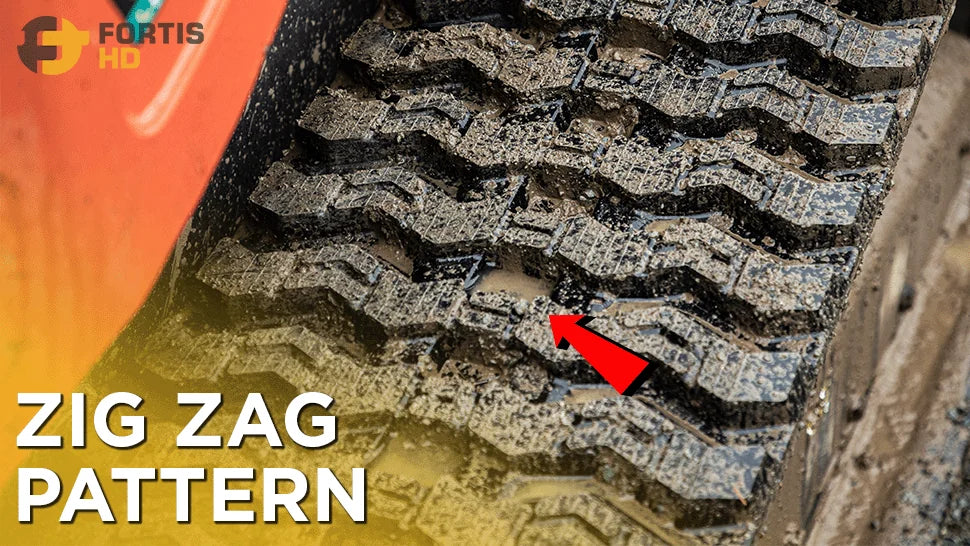
The following are the most common types of tread patterns. We have them all at Fortis. Let’s break down their features and suitable applications.
Note: We included three track models for each pattern, though our skid steer tracks are available in several patterns for the most popular brands and models.
| PATTERN | SUITABLE FOR | RECOMMENDED MODELS | |||
|---|---|---|---|---|---|

Straight Bar |
The straight bar pattern has continuous straight bars running across the width of the track. It offers
high traction and features good self-cleaning and cut resistance due to fewer edges. Straight bar tracks achieve traction on soft and muddy terrains and wet conditions. If you operate at high speeds, these tracks give you excellent grip and maneuverability. |
IHI CL45 Yanmar T210 CAT 259B3 |
|||

Multi bar |
The multi-bar is a general-purpose track, versatile for various conditions. Think of them as your
“all-season tracks.” Its multiple bars—in a staggered or varied arrangement—provide balanced grip and ride comfort on soft and hard surfaces and versatility for various conditions. If you’re dealing with gravel or loose terrain, a multi-bar tread might be your best option. However, these tracks will also work well on a hard surface and snow without issues. It features moderate self-cleaning and good resistance to abrasion due to its harder rubber compounds. |
Kubota SVL90 Gehl 4635 Volvo MCT85C |
|||

Zig-zag |
If traction is important to you, zig-zag patterned rubber tracks are the way to go. Zig-zags are
aggressive directional tracks excellent for snow, mud, clay, and wet surfaces where self-cleaning is
essential. The tracks have lugs in a zig-zag pattern with a good self-cleaning capacity. They have moderate resistance to cuts and abrasions. |
Ditch Witch XT855 Morooka MST600 Mustang 2100RT |
|||

C-lug |
With C-shaped lugs in a staggered pattern, the H or C tracks are the most common treads for tracks. They
are general-purpose tracks for soft and hard surfaces, suitable for construction sites with mixed terrains
(mud, snow, dirt, rocks, or clay). C-lug tracks offer balanced grip and ride smoothness, moderate self-cleaning, and good resistance to cuts. |
Komatsu CK30 Case TR320 Takeuchi Manufacturing TL250 |
|||

Block |
Tracks with staggered block-like lugs—often square or rectangular—provide stability, even weight
distribution, grip, and high resistance to abrasion on hard surfaces. However, they have a reduced
self-cleaning capacity due to the block shape. Suitable for asphalt, concrete, and loose terrain, the block pattern minimizes vibration for a smoother ride, providing consistent and efficient performance. |
Bobcat T740 Wacker-Neuson ST35 JCB 260T |
|||

Hex |
Hexagonal-shaped lugs arranged across the track for traction and stability—moderate self-cleaning and
resistance to cuts and abrasions. Hex tracks suit soft and hard terrains and situations where you must balance grip and stability. Tracks with hex patterns are turf-friendly. |
John Deere CT323 New Holland C175 Toro TX425 |
|||
Although we recommend some tread patterns for a specific terrain, it doesn’t mean you can’t use them on others.
Regardless of the pattern, every set of rubber tracks we offer at Fortis undergoes a high-quality vulcanization process during production.
Vulcanized rubber flexes and deforms under the weight of a skid steer, pushing the rubber into all the road’s irregularities to increase the total contact patch between the rubber compound and the ground to maximize grip.
So, you can use the zig-zag pattern for snow removal—even on icy roads— or push material in muddy conditions. Although rubber tracks with a C-lug pattern are suitable for soft materials, people commonly use them on asphalt or concrete.
Remember that you must install directional tracks—non-symmetrical patterns—correctly so they work efficiently on muddy and soft terrain.
In this video, Keith, one of our expert heavy-duty mechanics, explains how to identify and install directional tracks properly.
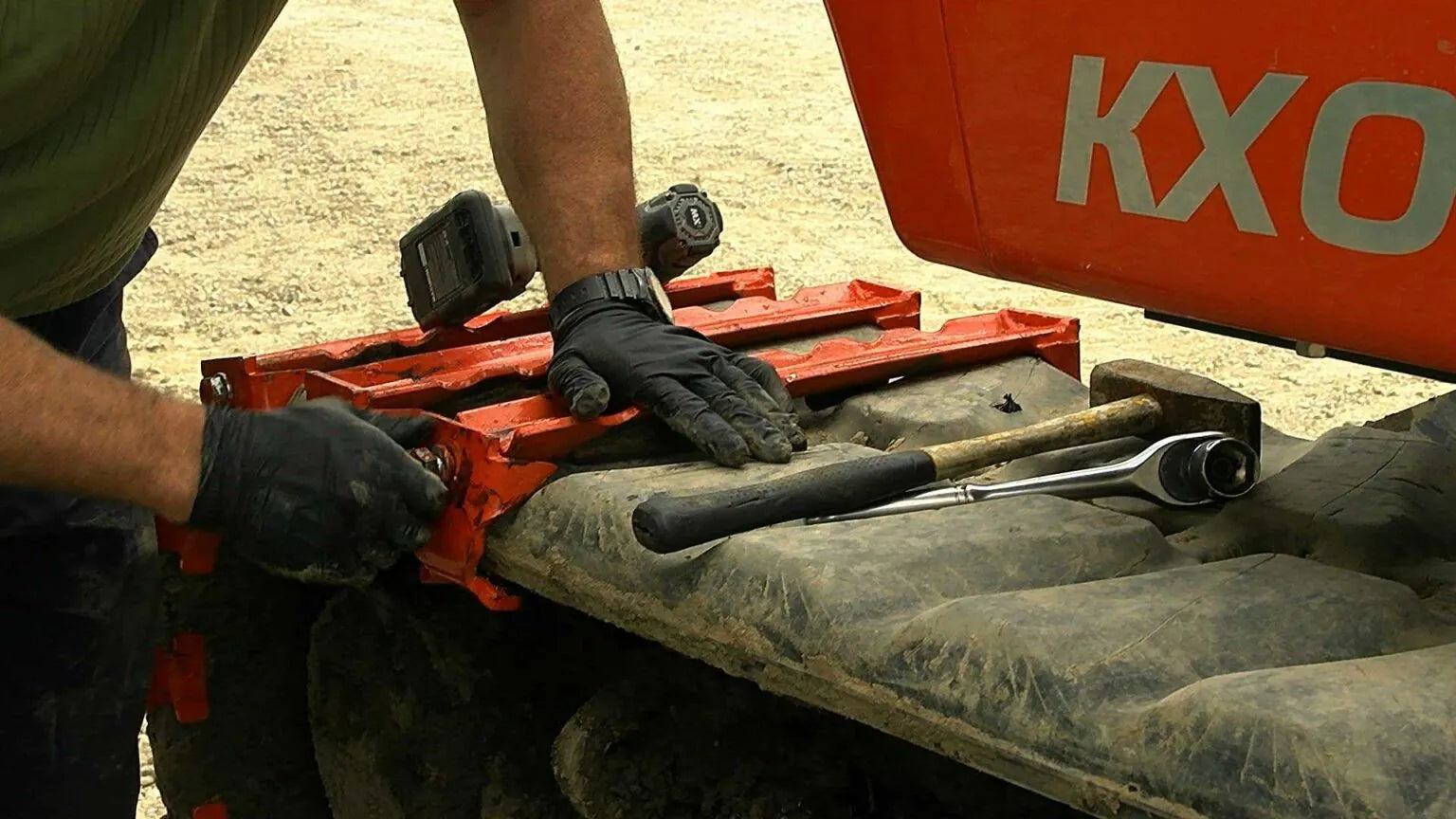
Photo courtesy of Pro-Lynx Traction Bar
Traction bars and carbide studs are products worth mentioning that further enhance the performance of skid steer rubber tracks on soft and icy terrain.
The downside of using traction bards and studs is that they compromise the integrity of the tracks by either squishing and modifying the track body or piercing the rubber compound, increasing the wear on the tracks themselves.
An optional product for the owners of wheeled skid steers is OTT tracks (over the tire tracks).
While less effective than a compact track loader, OTT tracks will significantly increase the grip, flotation, and stability of wheeled skid steers on slippery and soft terrain.
We talk aobut the benefits of OTT and rubber tracks in general in our article: What Are Skid Steers Tracks?
Selecting replacement rubber tracks based on terrain, usage, and length of the project will enhance the performance of your skid steer.
Plenty of review articles and videos on the internet help you thoroughly research the best skid steer tracks for your needs.
If you’re still unsure, reach out to one of our experts at Fortis, who will gladly help you select bobcat rubber tracks—as skid steer tracks are commonly known— to boost performance for your next project.

For those who already know what you need and want to top it off with the best buying experience, visit Fortis HD to get replacement skid steer tracks that will outperform, outlast, have better up time, and have a long service life.